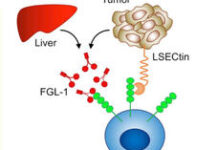Fosnetupitant demonstrated non-inferiority to fosaprepitant with a favourable safety profile and lower risk for injection site reactions; thus, fosnetupitant is valuable in the prophylaxis of acute, delayed, and beyond delayed chemotherapy-induced nausea and vomiting (CINV). The results from the CONSOLE, the phase III study that was the first head-to-head comparison between two different neurokinin-1 receptor antagonists in combination with palonosetron and dexamethasone are published on 18 November 2021 in the Journal of Clinical Oncology by Dr Akito Hata of the Department of Thoracic Oncology, Kobe Minimally Invasive Cancer Center in Kobe, Japan and colleagues.
Fosaprepitant is a widely used neurokinin-1 receptor antagonist, the injectable prodrug of aprepitant, which can be administered to patients with difficulty in eating or drinking, thereby improving compliance compared with oral drugs. Fosaprepitant has been reported to be associated with a high frequency of injection site reactions with cisplatin dosing, resulting in clinical concerns and suggesting an unmet medical need.
Fosnetupitant is an injectable phosphorylated prodrug of netupitant. Its active form, netupitant, is characterised by high selectivity and affinity to the neurokinin-1 receptor and has a longer elimination half-life than that of aprepitant.
In the United States and European Union, a fixed-dose combination of fosnetupitant and palonosetron (intravenous netupitant-palonosetron) has been approved for preventing CINV. In Japan, approaches have focused on the development of fosnetupitant as a single agent.
A phase I study confirmed a good safety profile of fosnetupitant, with rapid conversion to its active form after administration in healthy adults. Furthermore, a clinical pharmacology study on drug interaction between fosnetupitant and granisetron confirmed a good safety profile and the absence of drug interactions with concurrent use of granisetron.
A double-blind, randomised, phase II study in patients receiving cisplatin confirmed the superiority of fosnetupitant to placebo in combination with palonosetron and dexamethasone in complete response (CR) defined as no emetic event and no rescue medication rate during the overall phase (0-120 hours after the start of cisplatin administration; acute [0-24 hours] plus delayed [24-120 hours]) and a satisfactory safety profile, with a very low frequency of injection site reactions. This phase II study extended the efficacy observation period beyond 120 hours to 168 hours for the exploratory evaluation, suggesting a higher efficacy of fosnetupitant compared with placebo.
A randomised, phase III study evaluated the efficacy and safety of fosnetupitant versus fosaprepitant as a control drug when combined with palonosetron and dexamethasone. Patients scheduled to receive cisplatin-based chemotherapy were randomly assigned 1:1 to fosnetupitant 235 mg or fosaprepitant 150 mg in combination with palonosetron 0.75 mg and dexamethasone. The primary endpoint was overall (0-120 hours) CR defined as no emetic event and no rescue medication rate, stratified by sex and age category, to show the non-inferiority of fosnetupitant to fosaprepitant.
Overall, 795 patients were randomly assigned, of whom 785 received the study drug, 392 fosnetupitant versus 393 fosaprepitant, and were evaluated for efficacy and safety. The overall CR rate was 75.2% versus 71.0%, respectively (Mantel-Haenszel common risk difference, 4.1%; 95% confidence interval [CI] –2.1% to 10.3%), demonstrating non-inferiority of fosnetupitant to fosaprepitant.
The CR rates in the acute (0-24 hours), delayed (24-120 hours), and beyond delayed (120-168 hours) phases, and at 0-168 hours were 93.9% versus 92.6%, 76.8% versus 72.8%, 86.5% versus 81.4%, and 73.2% versus 66.9%, respectively.
The incidence rates of treatment-related adverse events with fosnetupitant versus fosaprepitant were 22.2% versus 25.4%, whereas adverse events or treatment-related adverse events relevant to injection site reactions were 11.0% versus 20.6% (p < 0.001) and 0.3% versus 3.6% (p < 0.001).
The authors concluded that the non-inferiority of fosnetupitant to fosaprepitant was demonstrated in the overall CR rate in patients receiving highly emetogenic chemotherapy in combination with palonosetron and dexamethason. The proportion of patients who developed injection site reactions was significantly lower with fosnetupitant than with fosaprepitant, confirming the good safety profile of fosnetupitant. Thus, fosnetupitant is valuable in the prophylaxis of acute, delayed, and beyond delayed CINV.
Funding for this study was provided by Taiho Pharmaceutical Co, Ltd.
Reference
Hata A, Okamoto I, Inui I, et al. Randomized, Double-Blind, Phase III Study of Fosnetupitant Versus Fosaprepitant for Prevention of Highly Emetogenic Chemotherapy-Induced Nausea and Vomiting: CONSOLE. JCO; Published online 18 November 2021. DOI: 10.1200/JCO.21.01315







